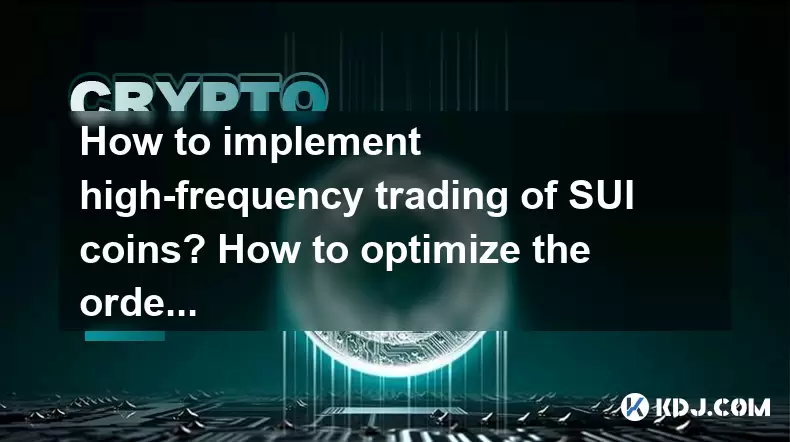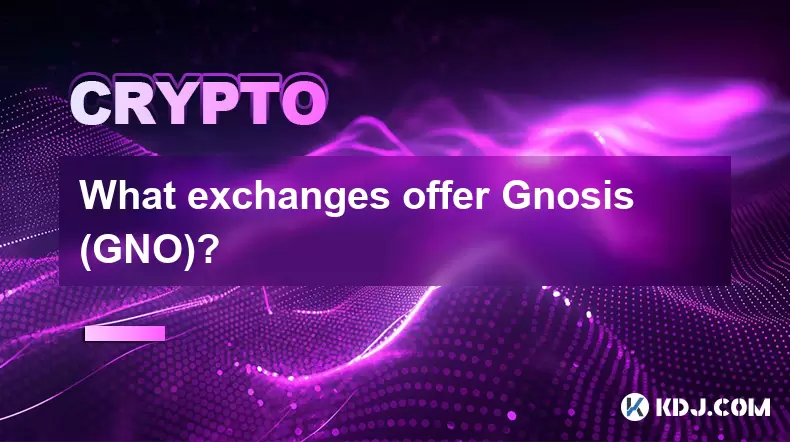-
 Bitcoin
Bitcoin $118600
-2.59% -
 Ethereum
Ethereum $4282
-0.42% -
 XRP
XRP $3.129
-4.21% -
 Tether USDt
Tether USDt $0.0000
0.01% -
 BNB
BNB $805.4
-1.80% -
 Solana
Solana $174.3
-5.77% -
 USDC
USDC $0.9998
-0.01% -
 Dogecoin
Dogecoin $0.2230
-6.33% -
 TRON
TRON $0.3466
1.70% -
 Cardano
Cardano $0.7745
-5.73% -
 Chainlink
Chainlink $21.37
-3.53% -
 Hyperliquid
Hyperliquid $42.93
-7.25% -
 Stellar
Stellar $0.4324
-4.94% -
 Sui
Sui $3.660
-7.17% -
 Bitcoin Cash
Bitcoin Cash $591.6
2.72% -
 Hedera
Hedera $0.2467
-7.04% -
 Ethena USDe
Ethena USDe $1.001
0.00% -
 Avalanche
Avalanche $22.92
-6.14% -
 Litecoin
Litecoin $118.8
-3.79% -
 Toncoin
Toncoin $3.378
-0.46% -
 UNUS SED LEO
UNUS SED LEO $9.011
-1.15% -
 Shiba Inu
Shiba Inu $0.00001294
-5.81% -
 Uniswap
Uniswap $11.24
0.53% -
 Polkadot
Polkadot $3.870
-6.16% -
 Cronos
Cronos $0.1662
-1.68% -
 Dai
Dai $1.000
0.02% -
 Ethena
Ethena $0.7915
-5.62% -
 Bitget Token
Bitget Token $4.414
-1.65% -
 Monero
Monero $259.3
-3.85% -
 Pepe
Pepe $0.00001120
-8.29%
How to implement high-frequency trading of SUI coins? How to optimize the order speed of SUI coins?
HFT for SUI coins requires robust algorithms, low-latency infrastructure, and effective risk management to capitalize on small price movements and optimize order speed.
May 20, 2025 at 10:14 am

High-frequency trading (HFT) of SUI coins involves executing a large number of orders at very fast speeds, often leveraging advanced algorithms and technology to capitalize on small price movements. To implement HFT for SUI coins and optimize the order speed, several key steps and considerations must be addressed. This article will guide you through the process, focusing on the technical aspects and strategies needed to achieve high-frequency trading and optimize order speed for SUI coins.
Understanding High-Frequency Trading
High-frequency trading is a method of trading that uses powerful computer programs to transact a large number of orders in fractions of a second. It relies on complex algorithms to analyze multiple markets and execute orders based on market conditions. For SUI coins, HFT can be particularly effective due to the cryptocurrency's volatility and liquidity.
To implement HFT for SUI coins, you need to have a deep understanding of the market dynamics and the technical infrastructure required. This includes having access to real-time market data, low-latency trading platforms, and robust algorithms that can execute trades quickly and efficiently.
Setting Up the Technical Infrastructure
The first step in implementing HFT for SUI coins is to set up the necessary technical infrastructure. This involves:
- Choosing a reliable trading platform: Select a platform that supports SUI coins and offers low-latency trading capabilities. Examples include Binance, Coinbase Pro, and Kraken.
- Securing high-speed internet connection: A stable and fast internet connection is crucial for minimizing latency. Consider using a dedicated line or a co-location service near the exchange's servers.
- Implementing a robust trading algorithm: Develop or acquire an algorithm that can analyze market data and execute trades at high speeds. This may involve hiring a team of developers or purchasing existing HFT software.
- Setting up a data feed: Ensure you have access to real-time market data for SUI coins. This can be obtained through APIs provided by the trading platform or third-party data providers.
Developing the Trading Algorithm
The core of HFT is the trading algorithm. For SUI coins, the algorithm should be designed to:
- Analyze market data: Use real-time data to identify trends, patterns, and potential trading opportunities. This may involve technical indicators, statistical models, or machine learning techniques.
- Execute trades quickly: The algorithm must be able to send and receive orders at high speeds. This requires optimizing the code for performance and ensuring it can handle high volumes of data.
- Manage risk: Implement risk management strategies to protect against significant losses. This may include setting stop-loss orders, position limits, and other risk mitigation techniques.
Optimizing Order Speed for SUI Coins
To optimize the order speed for SUI coins, several strategies can be employed:
- Minimizing latency: Reduce the time it takes for orders to reach the exchange. This can be achieved by using co-location services, optimizing network routes, and reducing the number of hops between your trading system and the exchange.
- Using direct market access (DMA): DMA allows you to send orders directly to the exchange, bypassing traditional brokers. This can significantly reduce latency and improve order execution speed.
- Implementing smart order routing (SOR): SOR algorithms can route orders to the exchange with the best liquidity and lowest latency, improving the chances of quick execution.
- Optimizing the trading algorithm: Continuously refine and optimize the trading algorithm to execute trades faster. This may involve using more efficient programming languages, optimizing data structures, and leveraging hardware acceleration.
Testing and Monitoring the System
Before going live with HFT for SUI coins, it's essential to thoroughly test and monitor the system. This involves:
- Backtesting the algorithm: Use historical data to test the performance of the trading algorithm. This can help identify potential issues and optimize the strategy.
- Conducting live simulations: Run the system in a simulated environment to test its performance under real market conditions. This can help identify any technical issues or bottlenecks.
- Monitoring performance: Once the system is live, continuously monitor its performance to ensure it is operating as expected. This includes tracking execution speed, trade volumes, and profitability.
Ensuring Compliance and Security
HFT for SUI coins must be conducted in compliance with relevant regulations and with a focus on security. This involves:
- Understanding regulatory requirements: Ensure that your HFT activities comply with local and international regulations. This may include registering with financial authorities and adhering to reporting requirements.
- Implementing robust security measures: Protect your trading system from cyber threats by using encryption, firewalls, and other security technologies. Regularly update and patch your systems to address vulnerabilities.
- Maintaining data integrity: Ensure that the data used by your trading algorithm is accurate and reliable. This may involve implementing data validation checks and using multiple data sources to cross-verify information.
Frequently Asked Questions
Q: Can HFT be profitable for SUI coins?
A: Yes, HFT can be profitable for SUI coins if implemented correctly. The key is to have a robust trading algorithm, low-latency infrastructure, and effective risk management strategies. However, profitability is not guaranteed and depends on market conditions and the effectiveness of your trading system.
Q: What are the risks associated with HFT for SUI coins?
A: The main risks include market volatility, technical failures, and regulatory changes. HFT involves executing a large number of trades, which can amplify losses if the market moves against your positions. Additionally, technical issues such as latency spikes or system crashes can impact performance. It's crucial to have robust risk management and contingency plans in place.
Q: How can I improve the accuracy of my HFT algorithm for SUI coins?
A: Improving the accuracy of your HFT algorithm involves continuously refining your strategy based on market data and performance metrics. This can include incorporating more advanced machine learning techniques, using additional data sources, and regularly backtesting and optimizing your algorithm. Collaboration with data scientists and quantitative analysts can also help enhance the accuracy of your trading strategy.
Q: Are there any specific tools or software recommended for HFT of SUI coins?
A: Several tools and software can be used for HFT of SUI coins. Popular options include trading platforms like Binance and Coinbase Pro, which offer APIs for automated trading. For algorithm development, programming languages like Python and C++ are commonly used, along with libraries such as NumPy and Pandas for data analysis. Additionally, specialized HFT software like MetaTrader and NinjaTrader can be used, although they may require customization for SUI coins.
Disclaimer:info@kdj.com
The information provided is not trading advice. kdj.com does not assume any responsibility for any investments made based on the information provided in this article. Cryptocurrencies are highly volatile and it is highly recommended that you invest with caution after thorough research!
If you believe that the content used on this website infringes your copyright, please contact us immediately (info@kdj.com) and we will delete it promptly.
- Dogecoin, Presale, Surge: Riding the Meme Coin Wave
- 2025-08-12 11:10:12
- Dogecoin, Tron, and the ROI Reality Check: What's a Crypto Investor to Do?
- 2025-08-12 11:15:12
- Ethereum Layer-2 Scaling Competition Heats Up as ETH Breaks $4K
- 2025-08-12 10:30:12
- China Regulation, Stablecoins, and BNB Presale: Navigating the Crypto Landscape
- 2025-08-12 11:30:12
- Meme Coins, Investment, and Token Burns: What's Hot in 2025?
- 2025-08-12 10:30:12
- China's National Security Alarm Bells Ring Over Worldcoin's Iris Scans
- 2025-08-12 11:35:12
Related knowledge

How to purchase Aragon (ANT)?
Aug 09,2025 at 11:56pm
Understanding Aragon (ANT) and Its PurposeAragon (ANT) is a decentralized governance token that powers the Aragon Network, a platform built on the Eth...

Where to trade Band Protocol (BAND)?
Aug 10,2025 at 11:36pm
Understanding the Role of Private Keys in Cryptocurrency WalletsIn the world of cryptocurrency, a private key is one of the most critical components o...

What is the most secure way to buy Ocean Protocol (OCEAN)?
Aug 10,2025 at 01:01pm
Understanding Ocean Protocol (OCEAN) and Its EcosystemOcean Protocol (OCEAN) is a decentralized data exchange platform built on blockchain technology,...

Where can I buy UMA (UMA)?
Aug 07,2025 at 06:42pm
Understanding UMA and Its Role in Decentralized FinanceUMA (Universal Market Access) is an Ethereum-based decentralized finance (DeFi) protocol design...

What exchanges offer Gnosis (GNO)?
Aug 12,2025 at 12:42pm
Overview of Gnosis (GNO) and Its Role in the Crypto EcosystemGnosis (GNO) is a decentralized prediction market platform built on the Ethereum blockcha...

How to buy Storj (STORJ) tokens?
Aug 09,2025 at 07:28am
Understanding Storj (STORJ) and Its Role in Decentralized StorageStorj is a decentralized cloud storage platform that leverages blockchain technology ...

How to purchase Aragon (ANT)?
Aug 09,2025 at 11:56pm
Understanding Aragon (ANT) and Its PurposeAragon (ANT) is a decentralized governance token that powers the Aragon Network, a platform built on the Eth...

Where to trade Band Protocol (BAND)?
Aug 10,2025 at 11:36pm
Understanding the Role of Private Keys in Cryptocurrency WalletsIn the world of cryptocurrency, a private key is one of the most critical components o...

What is the most secure way to buy Ocean Protocol (OCEAN)?
Aug 10,2025 at 01:01pm
Understanding Ocean Protocol (OCEAN) and Its EcosystemOcean Protocol (OCEAN) is a decentralized data exchange platform built on blockchain technology,...

Where can I buy UMA (UMA)?
Aug 07,2025 at 06:42pm
Understanding UMA and Its Role in Decentralized FinanceUMA (Universal Market Access) is an Ethereum-based decentralized finance (DeFi) protocol design...

What exchanges offer Gnosis (GNO)?
Aug 12,2025 at 12:42pm
Overview of Gnosis (GNO) and Its Role in the Crypto EcosystemGnosis (GNO) is a decentralized prediction market platform built on the Ethereum blockcha...

How to buy Storj (STORJ) tokens?
Aug 09,2025 at 07:28am
Understanding Storj (STORJ) and Its Role in Decentralized StorageStorj is a decentralized cloud storage platform that leverages blockchain technology ...
See all articles

























































































